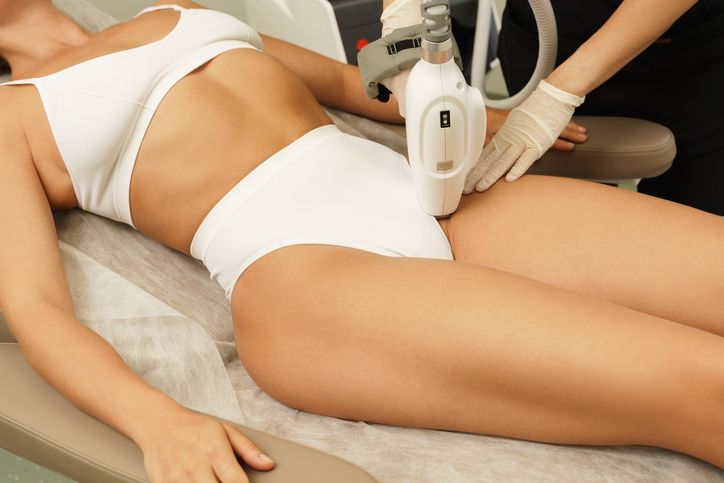- Home
- Trend
- Weight Loss Strategies
- Acne Tips
- Hair Health Information
- Blemish Removal Tips
- Acne Scar Removal Tips
- Muscle Building Techniques
- Intimate Care Tips
- Postpartum Intimate Care
- Eye Bags Wiki
- Tips for Face Slimming
- Secret of Permanent Hair Removal
- Breast Enlargement Tips
- Cure to Snoring
- Marionette Lines
- Skin-Tightening Secrets

免費體驗
A3 Laser Hair Removal Treatment
1 Minute Self-Registration
Date should not be before minimal date
Ingrown hairs can be more than just a minor annoyance, especially for those regularly shaving, waxing, or threading, and it seems like something that not everyone gets but it just constantly happens especially when you are just trying to have a nice underarm. Worry not, today we're cutting through the fluff to give you the essential facts. You'll learn why it's important to tackle ingrown hairs, how to prevent them effectively, and the reasons they might keep reappearing.
1
The Pain of Men and Women: Why Would Humans Develop Ingrown Hairs?

2
Why It's Critical to Treat Ingrown Hair While It's Early?

1. Infection (Folliculitis)
2. Hyperpigmentation
3. Scarring
4. Keloid Formation
5. Worsened Skin Texture
6. Pain and Discomfort
3
10 Most Common Reasons of Why Would Someone Get Ingrown Hair

1. Hair Removal Frequency
2. Dead Skin Cells and Ingrown Hairs
3. Natural Curling of Hair
4. Tight Clothing
5. Improper Hair Removal Techniques
6. Oily or Dirty Skin
7. Genetic Factors
8. Hormonal Changes
9. Dry Skin
10. Inflammation or Irritation from Previous Ingrown Hairs
4
Tips on Shaving, Waxing & Tweezing to Avoid Ingrown Hair Bumps

Shaving
Waxing
Tweezing

免費體驗
A3 Laser Hair Removal Treatment
1 Minute Self-Registration
Date should not be before minimal date
5
Prevent Ingrown Hair at its Root: A3 Laser Hair Removal Treatment


免費體驗
A3 Laser Hair Removal Treatment
1 Minute Self-Registration
Date should not be before minimal date
FAQ

1. What causes most ingrown hairs, and how can I prevent them?
Most ingrown hairs are caused by hair strands curling back into your skin instead of rising straight out from the hair follicles. This is often due to a curved hair follicle or hair growing back into the skin after a hair removal session. To prevent this, ensure your skin is exfoliated regularly to remove dead skin cells from the surface of the skin, which helps release ingrown hairs. Using a single blade razor can also reduce the likelihood of ingrown hairs by cutting the hair cleanly without pulling it out of the follicle.
2. Does the A3 Laser Hair Removal Treatment have any downtime, and how does it affect ingrown hairs?
No, the A3 Laser Hair Removal Treatment has no downtime. This non-surgical procedure targets hair follicles with a specific laser wavelength, effectively reducing the chances of hair growing back into the skin and causing ingrown hairs. Since the treatment also diminishes the blood supply to the hair follicles, it not only helps in removing existing hair but also prevents future ingrown hairs, leading to smoother skin without the inconvenience of recovery time.
3. Can using a single blade razor help in preventing ingrown hairs?
Yes, using a single blade razor can help prevent ingrown hairs. Multi-blade razors often cut the hair below the surface of the skin, increasing the risk of hair strands growing back into the skin. A single blade razor cuts the hair at the surface, reducing the chance of ingrown hairs.
4. What are the benefits of applying a warm, wet cloth before a hair removal session?
Applying a warm, wet cloth before a hair removal session softens the hair and opens up the hair follicles. This preparation makes it easier to remove the hair, reduces the risk of hair strands curling back into your skin, and helps prevent ingrown hairs.
5. Are there any specific techniques to treat and prevent ingrown hairs for people with curly hair?
People with curly hair are more prone to ingrown hairs due to the natural curvature of their hair follicles. To treat and prevent ingrown hairs, they should exfoliate regularly to keep the surface of the skin free of dead skin cells, use a single blade razor or other gentle hair removal methods, and avoid tight clothing that can push hair back into the skin. Moisturising after hair removal can also keep the skin soft, allowing hair to grow out more easily.








